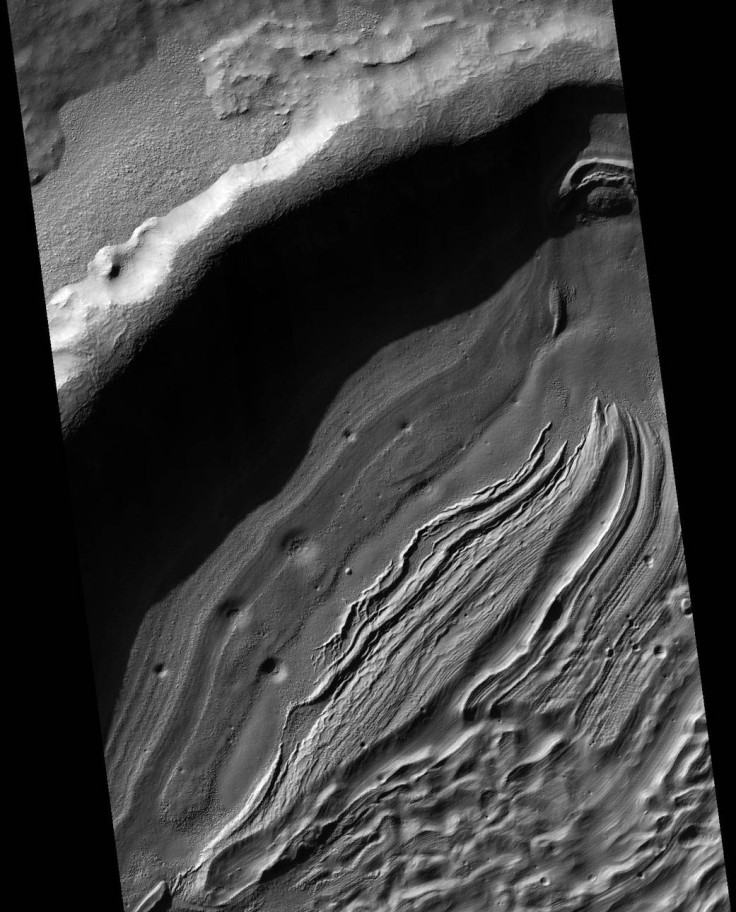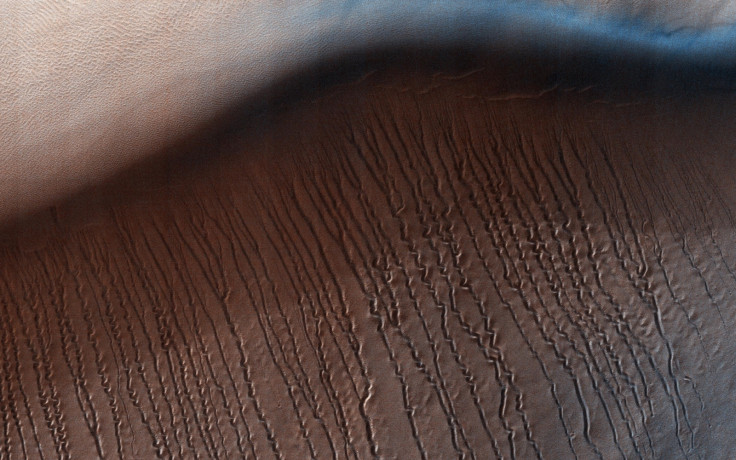Nasa explains the phenomenon behind the 'devil trails' on Mars
Large blocks of dry ice have carved out paths as they roll and evaporate during 'summer'.

The 2,200km-in-diameter Hellas Planitia on Mars is known to be one of the largest visible "impact basins" in the entire solar system. Nasa has now released an image that shows dust devil trails on a section of a dune in the basin, and has also explained the phenomenon behind the curious formation.
In the image, there are what appear to be long scratches along the slope that make it look like the dune has been clawed at. On closer inspection, the marks appear to have small squiggles along the lines. Nasa calls these scratches "linear gullies".
Nasa says that just like Earth, Mars also has frosty winters on its higher latitudes. The frost on Mars is not made of water, but carbon dioxide. The frost is literally sheets of dry ice.
The gullies are formed as a result of large chunks of ice breaking off and rolling down these slopes as winter ends and the climate turns warm.
Carbon dioxide sublimates into its gaseous state, and as it rolls down the slope, it carves the dust and evaporates at the same time, leaving behind scratches on the dunes. Ice blocks rolling down the slopes over the years along the same path might have created the pattern on the dunes.
Different densities of ice blocks and different types of sand along the surface with different hardness and flow resistance could have possibly contributed to what Nasa calls "exceptional sinuosity" – the visible squiggly patterns.

The images were shot by the Mars Reconnaisance Orbiter (MRO) using High Resolution Imaging Science Experiment (HiRISE), the on-board camera operated by The University of Arizona, Tucson.






